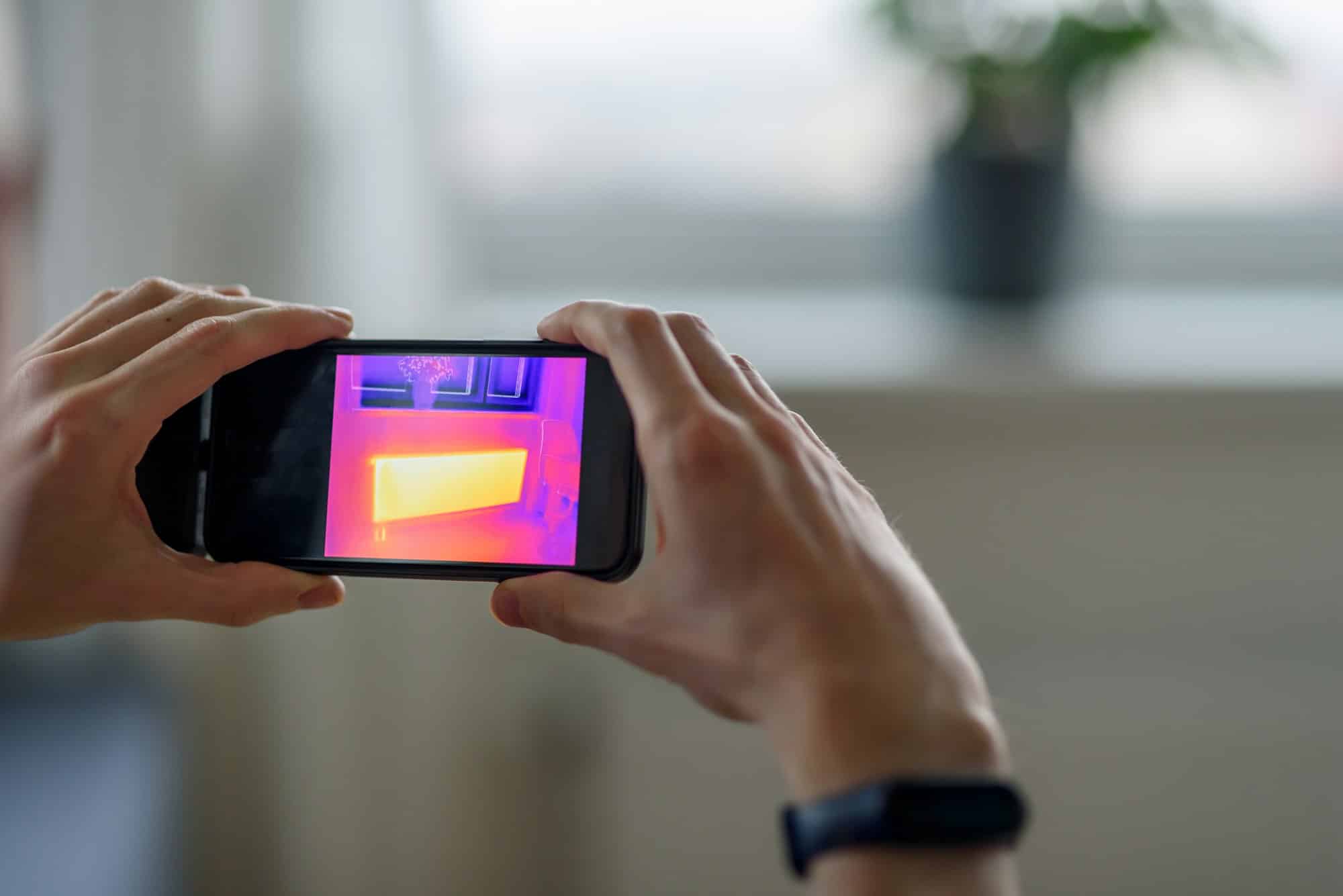How to leverage thermal imaging for energy efficiency audits in real estate properties?

Energy efficiency has taken center stage in the real estate industry, and thermal imaging is playing a crucial role in this regard. It is widely regarded as an essential tool for detecting energy wastage in buildings. This powerful technology allows industry professionals to uncover hidden issues such as heat loss, air leakage, moisture intrusion, and inadequate insulation, which are often the root causes of energy inefficiency in properties.
In this article, we will delve into the effective use of thermal imaging for conducting energy efficiency audits in real estate properties. We will cover the fundamentals of thermal imaging technology, the process of conducting an energy efficiency audit using this tool, and how this technology can help real estate owners save money and contribute to a more sustainable future.
Also read : How can the principles of Feng Shui be integrated into modern real estate design for enhanced living spaces?
Understanding Thermal Imaging Technology
Before leveraging thermal imaging for an energy efficiency audit, it’s vital to understand what it is and how it works.
Thermal imaging technology, also known as infrared imaging, involves the use of special cameras to detect heat energy. These cameras capture differences in temperature across various surfaces, creating a detailed thermal map. They can detect heat loss and air leakage in buildings, even in places that are difficult to access or invisible to the naked eye.
This might interest you : What strategies can be used to revitalize historical buildings through adaptive reuse in real estate development?
The technology is based on the principle that all objects emit infrared radiation, and the amount of radiation an object emits increases with temperature. Therefore, thermal imaging cameras can highlight areas in a building where heat is being lost or where cold air is infiltrating, providing a powerful tool for identifying energy inefficiency.
How to Conduct an Energy Efficiency Audit Using Thermal Imaging
The process of conducting an energy efficiency audit using thermal imaging is straightforward, but it requires careful planning and execution to ensure accurate results.
-
Preparation: The first step is to prepare the building for the audit. This involves turning off all heating and cooling systems to create a stable temperature environment. Any other potential heat sources, such as computers or appliances, should also be switched off.
-
Inspection: The next step is to inspect the building using a thermal imaging camera. Start by taking images of the exterior of the building to identify any areas where heat is escaping. Pay special attention to windows, doors, and roofing, as these are common areas for heat loss. Then move inside and take images of each room, focusing on walls, ceilings and floors.
-
Analysis: Once you have a collection of thermal images, the next step is to analyze them for signs of energy inefficiency. Look for any areas that are significantly warmer or cooler than their surroundings – these are likely places where heat is being lost or cold air is infiltrating.
It’s important to note that some variation in temperature is normal in any building. The key is to look for patterns that indicate a systemic issue, such as consistent heat loss across a particular wall or around a specific window.
-
Reporting: The final step is to compile your findings into a report. This should include a summary of the issues identified, along with recommendations for improving energy efficiency.
The Impact of Thermal Imaging on Energy Efficiency
The impact of thermal imaging on energy efficiency can be transformative. By identifying and addressing the root causes of energy waste, real estate owners can significantly reduce their energy consumption, leading to substantial cost savings.
Moreover, improving energy efficiency through the use of thermal imaging not only saves money but also contributes to sustainability efforts. By reducing energy consumption, building owners can reduce their carbon footprint and help combat climate change.
How Real Estate Owners Can Benefit from Energy Efficiency Audits
Energy efficiency audits can prove highly beneficial for real estate owners. The immediate benefit is cost savings. By identifying and addressing energy wastage, owners can significantly reduce their utility bills. In addition, by enhancing the energy efficiency of a property, its value could potentially increase, making it more attractive to prospective buyers or tenants.
Furthermore, conducting energy efficiency audits using thermal imaging can also help to prevent future issues such as dampness or structural damage, which often result from heat loss and moisture intrusion. By identifying these issues early, owners can carry out necessary repairs, avoiding costly fixes down the line.
In conclusion, thermal imaging offers a powerful tool for conducting energy efficiency audits in real estate. By leveraging this technology, real estate professionals can identify energy wastage, reduce costs, enhance property values, and contribute to a more sustainable future.
Evaluating Thermostat Performance using Thermal Imaging
Understanding and improving the performance of a property’s heating and cooling systems is an integral part of an energy efficiency audit. One way to achieve this is by evaluating the performance of thermostats using thermal imaging technology.
Thermostats are crucial to controlling energy consumption within homes and commercial buildings. A malfunctioning or poorly programmed thermostat can lead to unnecessary energy wastage, impacting energy costs and the building’s overall energy efficiency.
Here’s where thermal imaging steps in. This technology can help assess the performance of thermostats and identify any issues that may be preventing them from operating effectively. For example, thermal imaging can detect whether the thermostat is accurately reading the room temperature or if it’s located in a spot that’s affecting its readings like near windows or air vents.
Thermal imaging can also assess the performance of HVAC systems. It can reveal issues like overworked HVAC components or uneven distribution of air, indicating that the system is not operating at its optimal efficiency.
In essence, thermal imaging can play a pivotal role in auditing thermostat performance to ensure they are contributing to rather than hindering the energy efficiency of real estate properties.
Enhancing Energy Efficiency Using Smart Thermostats
In addition to identifying issues, thermal imaging can also guide real estate owners towards solutions like smart thermostats. These devices allow for more accurate and efficient control of heating and cooling in a property, thus reducing energy consumption.
Smart thermostats come with features such as Wi-Fi connectivity, climate control algorithms, and occupancy sensors, allowing the system to learn the building’s occupancy patterns and adjust temperatures accordingly. This reduces the wastage of energy when the building is unoccupied or when occupants are asleep.
Thermal imaging can aid in the optimal placement of smart thermostats by identifying areas with consistent temperature levels. The device can then be installed in these locations for the most accurate readings, leading to more efficient heating and cooling.
Conclusion: Key Takeaways from Leveraging Thermal Imaging in Energy Efficiency Audits
Thermal imaging provides a powerful means of identifying energy inefficiencies in real estate properties. It helps professionals detect issues that may otherwise go unnoticed, such as heat loss, air leakage, and inadequate insulation.
Specifically, this technology can be instrumental in evaluating and optimizing thermostat performance, which is crucial in controlling a property’s energy consumption. Moreover, it can guide the implementation of smart thermostats, leading to more efficient heating and cooling and substantial energy savings.
By undergoing an energy audit, real estate owners can reap significant benefits. These include cost savings from reduced energy usage, potential increases in property value, and the prevention of future structural issues. Most importantly, this process contributes to the broader goal of sustainability by reducing the property’s carbon footprint.
In the end, thermal imaging presents a proactive approach to energy management, ensuring that buildings are not just structurally sound but also energy efficient.
